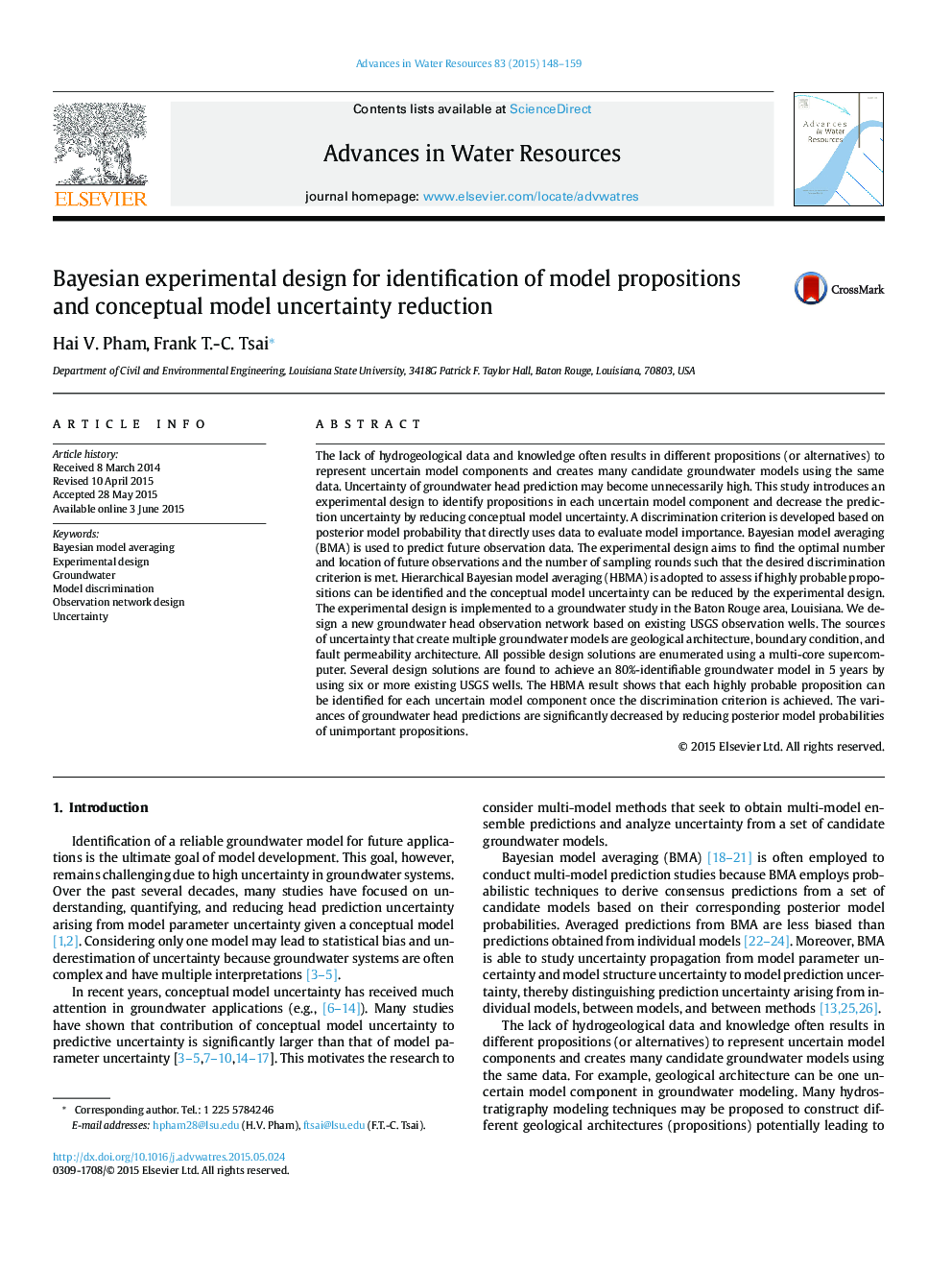| Article ID | Journal | Published Year | Pages | File Type |
|---|---|---|---|---|
| 6380911 | Advances in Water Resources | 2015 | 12 Pages |
Abstract
The lack of hydrogeological data and knowledge often results in different propositions (or alternatives) to represent uncertain model components and creates many candidate groundwater models using the same data. Uncertainty of groundwater head prediction may become unnecessarily high. This study introduces an experimental design to identify propositions in each uncertain model component and decrease the prediction uncertainty by reducing conceptual model uncertainty. A discrimination criterion is developed based on posterior model probability that directly uses data to evaluate model importance. Bayesian model averaging (BMA) is used to predict future observation data. The experimental design aims to find the optimal number and location of future observations and the number of sampling rounds such that the desired discrimination criterion is met. Hierarchical Bayesian model averaging (HBMA) is adopted to assess if highly probable propositions can be identified and the conceptual model uncertainty can be reduced by the experimental design. The experimental design is implemented to a groundwater study in the Baton Rouge area, Louisiana. We design a new groundwater head observation network based on existing USGS observation wells. The sources of uncertainty that create multiple groundwater models are geological architecture, boundary condition, and fault permeability architecture. All possible design solutions are enumerated using a multi-core supercomputer. Several design solutions are found to achieve an 80%-identifiable groundwater model in 5 years by using six or more existing USGS wells. The HBMA result shows that each highly probable proposition can be identified for each uncertain model component once the discrimination criterion is achieved. The variances of groundwater head predictions are significantly decreased by reducing posterior model probabilities of unimportant propositions.
Related Topics
Physical Sciences and Engineering
Earth and Planetary Sciences
Earth-Surface Processes
Authors
Hai V. Pham, Frank T.-C. Tsai,
